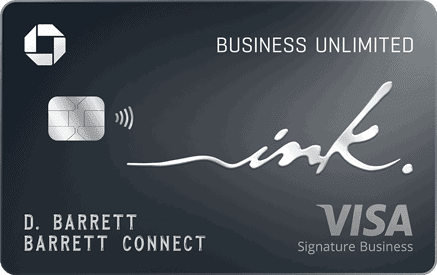
10xTravel is part of an affiliate sales network and receives compensation for sending traffic to partner sites, such as CreditCards.com. This compensation may impact how and where links appear on this site. This site does not include all financial companies or all available financial offers. Terms apply to American Express benefits and offers. Enrollment may be required for select American Express benefits and offers. Visit americanexpress.com to learn more.
Note: Some of the offers mentioned below may have changed or may no longer be available. The content on this page is accurate as of the posting date; however, some of our partner offers may have expired. You can view current offers here.
Since 1981, the Japan Rail or JR Pass has offered travelers unmatched flexibility and cost-effectiveness of its price.
For an initially steep fee, you can get unlimited access to the Japan Railways network, including eligible buses and ferries, allowing you to zip across the country at 200 miles per hour.
Depending on your itinerary, you could easily offset the cost of the JR Pass, saving you hundreds of dollars compared to buying individual pay-as-you-go tickets. However, if you’re planning longer trips with more time spent in each city, the JR Pass may not be your best bet.
So what does the JR Pass cover?
Let’s take a detailed look at exactly what the JR Pass covers, how to use the JR Pass, how to buy the JR Pass, the JR Pass price, where to buy the JR Pass and how to maximize it.
We’ll also cover some ideas on how to use credit card rewards to offset the cost of the JR Pass.
What is JR Pass?
The JR Pass gives you unlimited access to the Japan Railway network, as well as eligible metros, buses and ferries.
Instead of having to buy individual tickets for every train you take and pay extra to reserve a seat, the JR Pass simplifies your life.
If you’re planning to fly to Japan using miles, the JR Pass will be key in making your time spent there go as smoothly as possible.
Order your JR Pass online before you fly, activate it once you arrive in Japan and you’re good to go.
Whether you want to go as far north as Hokkaido, all the way south to Kagoshima or visit the highlights of the “Golden Route”, the JR Pass has you covered.
Not to mention that JR Pass holders also have access to special discounts at tourist hot spots and JR Group hotels.
If you want versatility, convenience, peace of mind and cost savings, the JR Pass remains unbeaten.
What Does JR Pass Cover?
The JR Pass covers all major local, rapid and express trains in the Japan Railway network.
While the JR Pass doesn’t tend to include subways and trams, there are exceptions. Likewise, most major cities have a few JR lines you can take advantage of.
When in Tokyo, you’ll enjoy additional access to the Tokyo Monorail, the Yamanote line (the Tokyo Metro) and the Narita Express from Narita Airport to Tokyo. This can make getting around in Tokyo a whole lot easier, particularly when going to and from the airport.
The JR Pass also includes access to the Aoimori Railway between Aomori and Hachinohe, the IR Ishikawa Railway line between Kanazawa and Tsubata, and the Ainokaze Toyama Railway between Toyama and Takaoka.
However, you’ll be limited to using local trains on the Ainokaze Toyama Railway, local or rapid service trains on the Aoimori Railway and local or limited express train services on the IR Ishikawa Railway. On all three lines, you’ll need to travel for the full segment. Travel won’t be covered by the JR Pass if you disembark within or outside the segments.
As of October 2023, JR Pass holders can also gain access to the Nozomi and Mizuho Shinkansen bullet trains, operating on the Tokaido Shinkansen and Sanyo Shinkansen lines, for a small additional fee.
Keep in mind that the JR Pass already includes access to the Sakura and Hikari Shinkansen bullet trains, which operate on the Tokaido and Sanyo lines. They can travel just as fast as the Nozomi and Mizuho Shinkansens, but typically include more stops along the way.
For this reason, you may want to pay the additional fee for access to the Nozomi and Mizuho bullet trains if getting to your destination as fast as possible is your top priority.
The JR Pass isn’t limited to train travel only. You’ll be covered on certain JR operated bus lines, excluding express bus services. Covered JR operated bus services include:
- JR Chugoku bus
- JR Hokkaido Bus
- JR Kanto Bus
- JR Kyushu Bus
- JR Shikoku Bus
- JR Tohoku Bus
- JR Tokai Bus
- West Japan JR Bus
You’ll also enjoy access to the JR-West Miyajima ferry. However, access to the JR Kyushu ferry, running between Hakata and Busan in South Korea, isn’t included with the JR Pass.
The inclusion of JR operated bus and ferry services gives you flexibility when traveling off the beaten path and getting around within Japan’s major cities.
However, the JR Pass remains best for navigating long distances across Japan. Using it this way will be the quickest method for offsetting its cost.
For first time travelers in Japan, the so-called “Golden Route” is the go-to itinerary, taking you through major hotspots including Tokyo, Kyoto, Nara, Osaka and Hakone. You can cover this entire route and more with a single ticket—the JR Pass.
The seven day JR Pass is perfect for giving you ample time to travel this route and enjoy the highlights of Japanese culture, old and new. But if you want to get off the beaten track and spend more time exploring Japan, you could opt for a 14 or 21 day JR Pass.
With the JR Pass, you could travel west to Kanazawa, enjoying the classical architecture and picturesque landscaped gardens. On your way to Kanazawa, you could make a stop in Nagano—the Japanese Alps—to quench your thirst for winter sport or Buddhist temples.
Alternatively, equipped with the JR Pass, you could explore as far south as the scenic coastline of Kagoshima and as far north as the breathtaking landscapes of Hokkaido.
With the JR Pass to hand, Japan is your oyster when it comes to getting around.

JR East - South Hokkaido Rail Pass.
JR Pass Prices and Eligibility
To qualify for the JR Pass, you need to be a foreign tourist with a “Temporary visitor” visa of 90 days or less.
That means you’re ineligible for a JR Pass if you have a working or long-term visa. Temporary visitor status shouldn’t be confused with other short-term stay visas, the latter of which aren’t eligible for the JR Pass.
Japanese nationals living abroad are eligible for the JR Pass if they’ve lived outside of Japan for more than 10 years. They’ll need to provide a permanent residency card in their application if they’re based in the United States.
You can apply for three different durations of JR Pass: seven day, 14 day or 21 day passes. You can opt for the standard car or green car, which is the first class ticket.
Following the policy changes of October 2023, here are the new JR Pass prices when bought from the Japan Railways Group directly:
| Ticket Type | Standard Car (Japanese Yen) | Standard Car (Japanese Yen) | Green Car | Green Car |
|---|---|---|---|---|
| Duration | Adult | Child* | Adult | Child |
| Seven day | JPY50,000 ($340) | JPY25,000 ($170) | JPY70,000 ($476) | JPY35,000 ($238) |
| 14 day | JPY80,000 ($544) | JPY40,000 ($272) | JPY110,000 ($748) | JPY55,000 ($374) |
| 21 day | JPY100,000 ($680) | JPY50,000 ($340) | JPY140,000 ($952) | JPY70,000 ($476) |
* Please note: Children are those between the ages of 6 and 11 years old. If a child turns 12 during the time they use their JR Pass, they’ll still be considered 11 years old for payment purposes.
To access the Nozomi and Mizuho Shinkansen, the following additional fees apply depending on the route:
| Nozomi and Mizuho Shinkansen Fee Add-on | Nozomi and Mizuho Shinkansen Fee Add-on |
|---|---|
| Route | Fee |
| Tokyo to Kyoto | JPY4,960 ($34) |
| Tokyo to Shin-Osaka | JPY4,960 ($34) |
| Tokyo to Hiroshima | JPY6,500 ($44) |
| Tokyo to Hakata | JPY8,140 ($55) |
| Kyoto to Hiroshima | JPY4,170 ($28) |
| Shin-Osaka to Hiroshima | JPY4,170 ($28) |
Keep in mind that these durations are consecutive days, not cumulative. So as soon as you activate your JR Pass, you’ll have seven, 14 or 21 consecutive days to maximize its value.
For this reason, JR passes aren’t always the best option for travelers staying between one and three months, who plan to spend more time in each city and take advantage of local transportation methods.

Is the JR Pass and Its Price Worth It?
Whether or not the JR Pass is worth it depends entirely on your travel plans.
The JR Pass costs between JPY4,762 ($32) and JPY7,143 ($48) per day, depending on which pass you hold. The longer the duration of your JR Pass, the less it costs per day.
That means you’d need to spend at least the equivalent if not more per day to offset the cost of your JR Pass.
The easiest way to work out whether the JR Pass pays off is to plug your planned itinerary into the Japan Travel by Navitime app or desktop version. Here you can see all your travel options, from taxis, buses, ferries, local, express and bullet trains, and exactly what each option will cost you. Do the math and work out if the JR Pass will save or cost you money.
Generally speaking, if you’re traveling long distances everyday, such as when doing the Golden Route, with additional stops in the deep south, north or far west, it’s going to be a lot easier to justify the cost of the JR Pass.
For example, a one-way train ticket from Tokyo Station to Kyoto Station on a Hikari or Kodama train costs JPY13,080 ($89) for an unreserved seat and ¥13,800 ($94) for a reserved seat. That one-way train ticket is almost double the daily average cost of a seven day JR Pass.
If your itinerary is filled with train journeys of similar lengths and equivalent costs, offsetting the cost of the JR Pass will be easy. Keep in mind that seat reservation is also free as a JR Pass holder, increasing its value proposition. And if you happen to miss a train, you won’t lose any money.
One of the unquantifiable benefits of the JR Pass is its convenience and flexibility, giving you peace of mind when traveling through Japan.
Something else to consider in your valuation of the JR Pass is that JR Pass holders receive exclusive discounts at certain tourist destinations across the country. You can find the discounts on offer for the following locations:
Likewise, certain hotels belonging to the JR Group give discounts to JR Pass holders.
However, if you’re planning on spending more time in each city while taking less long distance train journeys, offsetting the cost of the JR Pass will prove difficult. In this case, you’d be better off taking advantage of local trains, buses and regional railway passes.
To travel from Kyoto to Osaka with a local train, you’ll pay just JPY400 ($3) while the same journey with a Shinkansen would cost you JPY1,420 ($10) for an unreserved seat or JPY3,220 ($22) for a reserved seat. If you have the time for the longer transit duration, local trains will save you far more than the JR Pass will.
| All Shikoku Rail Pass | JR East South Hokkaido Rail Pass |
| Alpine-Takayama-Matsumoto Area Tourist Pass | JR East Tohoku Area Pass |
| Hiroshima Yamaguchi Area Pass | JR West All Area Pass |
| Hokkaido Rail Pass | Kansai Area Pass |
| Hokuriku Arch Pass | Kansai Hiroshima Area Pass |
| Hokuriku Area Pass | Kansai Hokuriku Area Pass |
| Ise-Kumano-Wakayama Area Tourist Pass | Kansai Thru Pass |
| JR East Nagano Niigata Area Pass | Kansai Wide Area Pass |
| Mt. Fuji Shizuoka Area Tourist Pass Mini | Kintetsu Rail Pass |
| Okayama Hiroshima Yamaguchi Area Pass | Kyushu Rail Pass |
| Sanin Okayama Area Pass | Sapporo-Noboribetsu Area Pass |
| Sanyo Sanin Area Pass | Setouchi Area Pass |
| Sanyo Sanin Northern Kyushu Pass | Takayama-Hokuriku Area Tourist Pass |
| Sapporo-Furano Area Pass | Tohoku South Hokkaido Rail Pass |
| Tokyo Wide Pass |
Alternatively, to make things simpler and cheaper, you could consider getting a Willer Express All Day Bus Pass.
Bus passes can be bought in three, five and seven day durations, with the maximum price less than a third of that of the JR Pass. For a maximum of JPY15,300 ($104), you can travel between Tokyo, Nagano, Hiroshima, Osaka, Kyoto and more. You can also take advantage of night buses to save on accommodation costs and make your travels even more cost-efficient.

JR EAST PASS (Tohoku area), with the Hayabusa Shinkansen.
Where to Buy JR Pass
Contrary to what you might assume, you can’t buy a JR Pass in Japan.
The JR pass is for tourists exclusively and can be ordered online through official vendors only. You also have the option to buy it directly from the Japan Railways Group.
If you buy from a third-party official vendor, your pass will be mailed to you as an exchange order. You’ll need to bring the physical copy with you to Japan, where you can then activate it on the day you wish to begin traveling—either at the airport when you arrive or at a JR train station. Third-party vendors tend to sell the JR Pass for a lower price but you’ll need to watch out for shipping costs.
If you buy directly from the JR Group through japanrailpass.net, you’ll have your exchange order emailed to you. After you arrive in Japan, you’ll follow the same activation process. While buying your JR Pass directly is more expensive, you’ll be able to pre-book train seats before you arrive in Japan. If you purchase your JR Pass directly, be aware that the website has business hours from 4:00 a.m. to 11:30 p.m. (Japan local time).
You can also opt to have your JR Pass delivered to your hotel in Japan, in the event you’re ordering it last minute and don’t want to risk late delivery. Just keep in mind that if you go for this option you won’t be able to activate your JR Pass at the airport, meaning you’ll have to pay for the transfer from the airport to your accommodation.
In all cases, your exchange order must be activated within 90 days from the issue date. For this reason, ordering your JR Pass one month before you intend to travel leaves plenty of time for delivery or any other issues, while still remaining well within the activation window limits.
Tips for Maximizing JR Pass Benefits
To maximize your JR Pass, you need a solid strategy. Here’s the best way to go about offsetting the cost of your JR Pass.
Plan your itinerary to include multiple long distance journeys.
The JR Pass begins to show its value over long journeys.
Long train journeys, such as from Tokyo to Kyoto, can cost well over $100 in peak season for an individual one-way ticket. You should try as much as possible to take advantage of these long distance routes. Make sure to always reserve a seat, as you’ll receive even more value per train ride by doing so.
The JR Pass is your key to seeing all of Japan on the cheap.
Utilize your JR pass for day trips and excursions.
While covering long distances is crucial for offsetting the cost of the JR Pass, you can get even more value by fitting in shorter day trips and excursions by train.
Perhaps you want to make a short stop at Nagano? Or a day-trip to Universal Studios in Osaka?
If it fits your itinerary, using your JR Pass to cover these shorter trips will enable you to offset its cost even faster.
Take advantage of additional discounts and benefits available to JR Pass holders.
Don’t forget about the vast array of discounts on offer for JR Pass holders.
Whether you’re in Hokkaido, Kyushu, Shikoku, East, Central or West Japan, you can take advantage of JR Pass exclusive discounts at a range of tourist hot spots.
Likewise, check JR Group hotels for exclusive JR Pass holder offers before booking your accommodation in Japan. You can get between 10% and 30% off your hotel stay as a JR Pass holder.
Using Rewards to Purchase JR Pass
While you aren’t able to buy the JR Pass through any credit card travel portals using points, you can redeem your points as a statement credit toward your purchase of it.
For example, with the Capital One Venture X Rewards Credit Card, you can redeem your miles as a statement credit toward travel purchases made within the last 90 days. You’ll receive a fixed redemption rate of 1 cent per mile.
Using this method, you can purchase the JR Pass with your Venture X Rewards card, earning you 2X miles per dollar spent. You can then redeem your miles to cover the cost of the JR Pass.
The miles you earn on your purchase of the JR Pass won’t cover the cost of it alone. A standard seven day adult JR Pass costs approximately $340, which would work out to 34,000 Capital One miles. However, if you manage to earn the welcome bonus on the Venture X card, you could more than cover the cost of the JR Pass using miles alone.
Capital One also has a wide range of airline and hotel transfer partners, making it a valuable well-rounded travel card for earning and redeeming Capital One points for travel.
Just keep in mind that to redeem miles toward the JR Pass, you’ll need to ensure that your purchase codes as a travel purchase. If not, you’ll need to contact Capital One directly to make the redemption.
Capital One Venture X Rewards Credit Card
75,000
Venture Miles
after you spend $4,000 in purchases in the first 3 months.
Annual Fee: $395
From Points to Adventures: How Rewards Take You Further in Japan
When looking at how to save money in Japan, the JR Pass is a top contender.
You could save hundreds of dollars on long-distance bullet trains and seat reservations, as well as at tourist hot spots and JR Group hotels. You’ll also have the flexibility, peace of mind and convenience that comes with the JR Pass.
However, if you’re planning a longer trip to Japan with more time spent in individual cities, you’ll save more money by opting for regional rail passes and Willer Express bus passes.
New to the world of points and miles? The Chase Sapphire Preferred® Card is the best card to start with.
With a bonus of 75,000 bonus points after you spend $5,000 on purchases in the first 3 months from account opening. , 5x points on travel booked through Chase Travel℠ and 3x points on restaurants, streaming services, and online groceries (excluding Target, Walmart, and wholesale clubs), this card truly cannot be beat for getting started!
once you spend $4,000 on purchases within 3 months from account opening, equal to $750 in travel.
Editors Note: Opinions expressed here are author’s alone, not those of any bank, credit card issuer, hotel, airline, or other entity. This content has not been reviewed, approved or otherwise endorsed by any of the entities included within the post.










